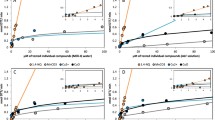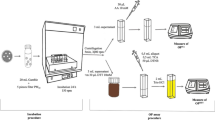Abstract
This investigation focuses on the application of anin vitro assay in elucidating the role of lung lining fluid antioxidants in the protection against inhaled particles, and to compare the toxicities of different airborne particulate matter (PM), PM10, collections from South Wales, UK.
PM collections from both urban and industrial sites caused 50% oxidative degradation of DNAin vitro at concentrations as low as 12.9 ± 2.1 μ ml-1 and 4.9 ± 0.9 μg ml-1 respectively. The primary source of this bioreactivity was found to be the soluble fraction of both particle collections. The coarser PM10_2.5 fraction also showed greater oxidative bioreactivity than the PM2.5_0.1 in both cases. When repeated in the presence of a low molecular weight fraction of fresh pulmonary lavage fluid, as well as in artificial lung lining fluid (200 (μM urate, glutathione and ascorbate), the DNA damage was significantly reduced in all cases(P 0.05). The antioxidants exerted a greater effect on the industrial samples than on the urban samples, and on the PM10_2.5 fractions than on the PM2.5_0.1 fractions, supporting the previous findings that respirable PM and urban samples contain fewer free radical sources than inhalable PM and industrial samples.
Similar content being viewed by others
Abbreviations
- ELF:
-
Epithelial lining fluid
- PM:
-
particulate matter
- PUF:
-
polyurethane foam
- sELF:
-
surrogate ELF
- ROFA:
-
residual oil fly ash
References
Adamson I Y R, Prieditis H and Vincent R 1999 Pulmonary toxicity of an atmospheric particulate sample is due to the soluble fraction;Toxicol. Appl. Pharmacol. 157 43–50
Adamson I Y R, Prieditis H, Hedgecock C and Vincent R 2000 Zinc is the toxic factor in the lung response to an atmospheric particulate sample;Toxicol. Appl. Pharmacol. 166 111–119
Brunekreef B, Hoek G, Fischer P and Spieksma F T M 2000 Relation between airborne pollen concentrations and daily cardiovascular and respiratory-disease mortality;Lancet 355 1517–1518
Costa D L and Dreher K L 1997 Bioavailable transition metals in particulate matter mediate cardiopulmonary injury in healthy and compromised animal models;Environ. Health Perspect. 1055 1053–1061
Department of Health 1998Quantification of the Effects of Air Pollution on Health in Great Britain (The Stationery Office UK) pp 18–36
Donaldson K, Gilmour P S and Beswick P H 1995 Supercoiled Plasmid DNA as a Model Target for Assessing the Generation of Free Radicals at the Surface of Fibres;Exp. Toxic. Pathol. 47 235–237
Donaldson K, Beswick P H and Gilmour P S 1996 Free Radical Activity Associated with the Surface of Particles: A Unifying Factor in Determining Biological Activity?;Toxicol. Lett. 88 293–298
Donaldson K, Brown D M, Mitchell C, Dineva M, Beswick P H, Gilmour P and MacNee W 1997 Free Radical Activity of PM10_2.5: Iron-Mediated Generation of Hydroxyl Radicals;Environ. Health Perspect. 10551285–1289
Dreher K, Jaskot R H, Lehmann J R, Richards J H, McGee J K, Ghio A J and Costa D L 1995 Soluble transition metals mediate residual oil fly ash induced acute lung injury;J. Toxicol. Environ. Health 50 285–305
Dreher K, Jaskot R, Kodavanti U, Lehmann J, Winsett D and Costa D 1996 Soluble transition metals mediate the acute pulmonary injury and airway hyperreactivity induced by residual oil fly ash particles;Chest 1093 541–554
Dye J, Adler K B, Richards J H and Dreher K L 1997 Epithelial injury induced by exposure to residual oil fly-ash particles: role of reactive oxygen species?;Am J. Resp. Cell Mol. Biol. 175 625–633
Gavett S H, Madison S L, Stevens M A and Costa D L 1999 Residual oil fly-ash amplifies allergic cytokines, airway responsiveness and inflammation in mice;Am. J. Resp. Crit. Care Med. 1606 1897–1904
Greenwell L L, Moreno T, Jones T P and Richards R J 2002 Particle-induced oxidative damage is ameliorated by pulmonary antioxidants;Free Rad. Biol. Med. 329 898–905
Gutteridge J M, Richmond R and Halliwell B 1979 Inhibition of the iron-catalysed formation of hydroxyl radicals from superoxide and of lipid peroxidation by desferrioxamine;Biochem. J. 184 469–472
Kavouras I, Ferguson S T, Wolfson J M and Koutrakis P 2000 Development and validation of a high volume low cut-off inertial impactor;Inhalation Toxicol. 12 35–50
Kavouras I G and Koutrakis P 2001 Use of polyurethane foam as the impaction substrate/collection medium in conventional inertial impactors;Aerosol Sci. Tech. 341 46–56
Marx J J and von Asbeck B S 1996 Use of iron chelators in preventing hydroxyl radical damage: Adult respiratory distress syndrome as an experimental model for the oxygenradical-mediated tissue damage;Acta Haematol. 95 49–62
Pope C A 3rd, Thun M J, Namboodiri M M, Dockery D W, Evans J S, Speizer F E and Heath C W Jr 1995 Particulate air pollution as a predictor of mortality in a prospective study of U.S. adults;Am. J. Respir. Crit. Care Med. 151 669–674
Richards R J, Atkins J, Marrs T C, Brown R F R and Masek L C 1989 The biochemical and pathological changes produced by the intratracheal instillation of certain components of zinc hexachloroethane smoke;Toxicol. Lett. 54 79–88
Richards R J 1997 Small particles, big problems;Biologist 44 249–251
Sagai M, Saito H, Ichinose T, Kodama M and Mori Y 1993 Biological effects of diesel exhaust particles. 1.in vitro production of superoxide andin vivo toxicity in mouse;Free Rad. Biol. Med. 14 37–47
Schwartz J and Meas L M 2000 Fine particles are more strongly associated than coarse particles with acute respiratory health effects in schoolchildren;Epidemiology 11 6–10
Vogl G and Elstner E F 1989 Diesel soot particles catalyse the production of oxy-radicals;Toxicol. Lett. 47 17–23
Zielinski H, Mudway I S, BeruBe K A, Murphy S, Richards R J and Kelly F J 1999 Modeling the interactions of particulates with epithelial lining fluid antioxidants;Am. J. Physiol. 2774 Pt 1 L719–726
Author information
Authors and Affiliations
Corresponding author
Rights and permissions
About this article
Cite this article
Greenwell, L.L., Moreno, T. & Richards, R.J. Pulmonary antioxidants exert differential protective effects against urban and industrial particulate matter. J. Biosci. 28, 101–107 (2003). https://doi.org/10.1007/BF02970139
Published:
Issue Date:
DOI: https://doi.org/10.1007/BF02970139




